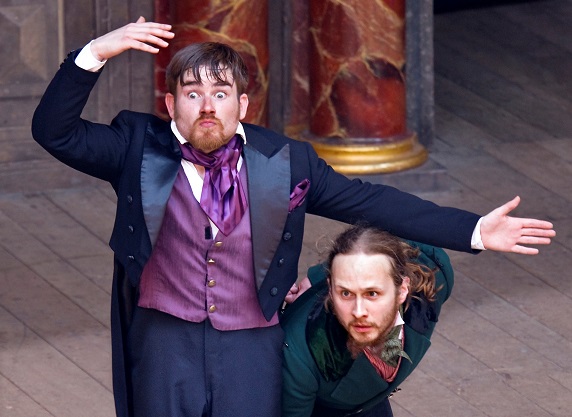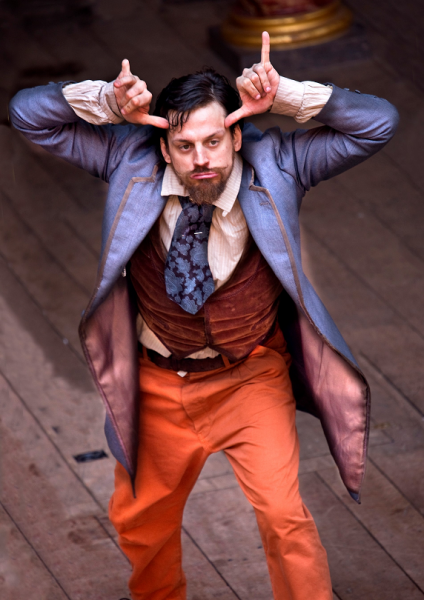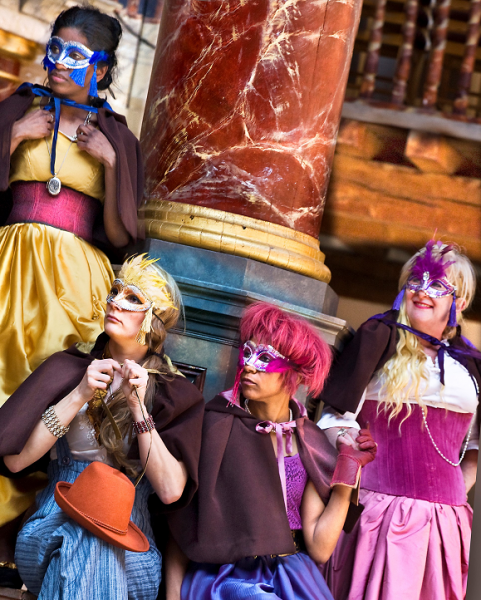
How to… Create theatre for deaf and hearing audiences
Make full use of the senses – even those you don't have: Deafinitely Theatre’s Paula Garfield explains how to create theatre for deaf and hearing audiences.
When I co-founded Deafinitely Theatre in 2002, it was with the aim of putting British Sign Language (BSL) centre stage, creating work that shows BSL but is also able to be enjoyed and accessed by everyone.
I am often asked: ‘How do you create your work?’ And the answer always is, it varies depending on the style of the production. Over the past 14 years, we have produced devised work, new writing and classic plays, including two Shakespeare productions. The way of working is unique to each show, but always with BSL at the core.
Remember that your actors need more than just a translation
We were invited to perform Love’s Labour’s Lost at Shakespeare’s Globe as part of the Globe-to-Globe Festival in 2012. This was a massive learning curve for us. We decided to bring in our actors for a two-week translation period during which we went through the play scene by scene, line by line, and translated the text into BSL. Once we were happy with the translation, we filmed the scene – a ‘sign-through’ – and at the end of the two weeks, each actor went away with a DVD to learn their parts, ready for the rehearsal process that was due to begin six weeks later.
 I went off to direct our children’s play and then came back ready for Love’s Labour’s rehearsals. By the end of the first few days, we realised that this process didn’t work – the actors didn’t have a connection yet to their characters, the relationships and the story. This dry translation we had produced needed to change once we had explored all the other elements of the piece, so we had to translate it all over again!
I went off to direct our children’s play and then came back ready for Love’s Labour’s rehearsals. By the end of the first few days, we realised that this process didn’t work – the actors didn’t have a connection yet to their characters, the relationships and the story. This dry translation we had produced needed to change once we had explored all the other elements of the piece, so we had to translate it all over again!
Two years later, we went back to the Globe to perform A Midsummer Night’s Dream and this time the whole process was very different. Having learnt from the Love’s Labour’s experience, we would have all the discussions first, make sure that everyone was happy with the story and relationships and then the actors would go off to work with Kate Furby, our Creative Interpreter, to agree a translation and I would come in and direct the scene. This process worked much better and this method would form the basis of my advice: make sure that you all choose a process that ensures the BSL translation is clear and appropriate to the production.
Make full use of the senses – even those you don’t have
In each of the Shakespeare plays, we used live original music to underscore the action as we felt it was important for the hearing members of our audience to have some sound throughout. I also wanted the deaf audience members to see the violin being played and to watch the guitarist as he moved around the space. You can tell so much from someone’s face and body as they play, even if you cannot hear the music itself. It’s so important to have musicians that are part of the production who interact with the actors.
Ensure your spoken English fits the piece
In Love’s Labour’s, there was no English spoken, as the Globe wanted each play in the festival performed completely in its own unique language. This was the first time that we had ever done a play entirely in BSL with no spoken English at all. Usually our productions are a combination of BSL, spoken English, sounds, captions and visual movement, depending on the style. For Dream, we did use some spoken English and had several characters speaking, and even singing!
 If I compare this to our recent production of George Brant’s play Grounded in October 2015, this was a very different style and experience. The piece was originally written as a one-woman monologue, but we used two actresses, one speaking and one using BSL. We had to explore why we had two actresses as it was important for us that there was a reason for them both being there, rather than Charmaine Wombwell, our speaking actress, being a random voice in the dark. We decided that Charmaine’s character was a part of the pilot’s sub-conscious and so Nadia Nadarajah, our BSL-using actress, didn’t look at her, but they were in sync with one another visually and physically.
If I compare this to our recent production of George Brant’s play Grounded in October 2015, this was a very different style and experience. The piece was originally written as a one-woman monologue, but we used two actresses, one speaking and one using BSL. We had to explore why we had two actresses as it was important for us that there was a reason for them both being there, rather than Charmaine Wombwell, our speaking actress, being a random voice in the dark. We decided that Charmaine’s character was a part of the pilot’s sub-conscious and so Nadia Nadarajah, our BSL-using actress, didn’t look at her, but they were in sync with one another visually and physically.
Above all, you have to use all of the tools at your disposal – including spoken English and BSL – to create something that makes sense artistically.
Technology is your friend
In Grounded, we used video projection in the production as well as creative captions. We also brought in a Sound Designer to ensure that both our deaf and hearing audience members were able to enjoy everything that was going on. There was one part where the pilot sings/signs the lyrics to a song so we had the words projected and the image of a soundwave as part of the video design.
It’s very interesting for us to explore new and evolving ways of making each production accessible and enjoyable for all. It is so important that the creative team for each show is aware of how you work, and is open to the challenge of thinking outside the box and exploring new ways of working on each production.
For our forthcoming show later this year, we’re considering using BSL, spoken English and creative captions throughout – not a black box but as part of the video design. Again, this would be a new style for this production… So watch this space!
Paula Garfield is Artistic Director of Deafinitely Theatre.
www.deafinitelytheatre.co.uk
Join the Discussion
You must be logged in to post a comment.